This is a detailed post about Day 3 of my Transylvania Long Weekend Tour with Explore!(Read about Day 1 and Day 2).
0745: Continental breakfast at Casa Zada Guest House. Breakfast consisted of cheese and meats, toast, butter and jam (home-made), cereals, tea and coffee. We met a very cute visitor during breakfast as well.

0830: Leave guest house and head to Peleș Castle.
1000: Arrive at Peleș. Our first stop is the Sinaia Monastery. There are two churches here; The old church was built in 1695 by Prince Prince Mihail Cantacuzino, following a pilgrimage to Mount Sinai in Egypt. A newer church was built here in 1865.
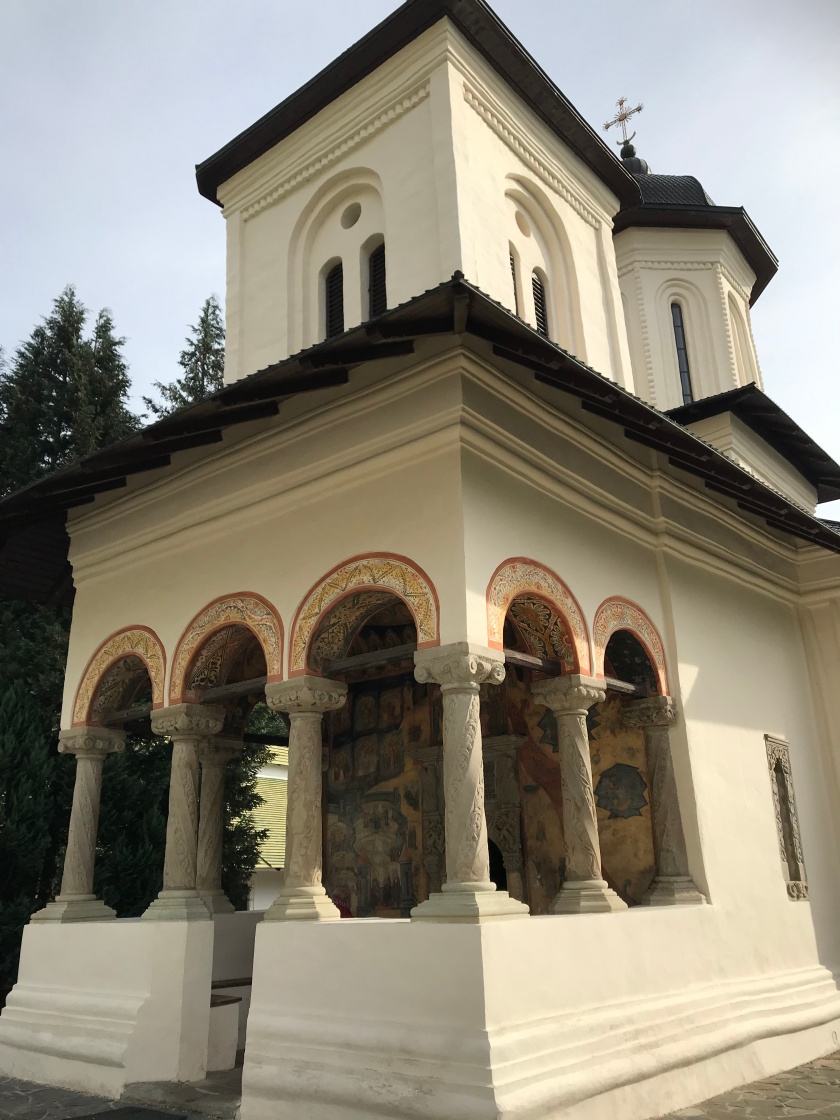
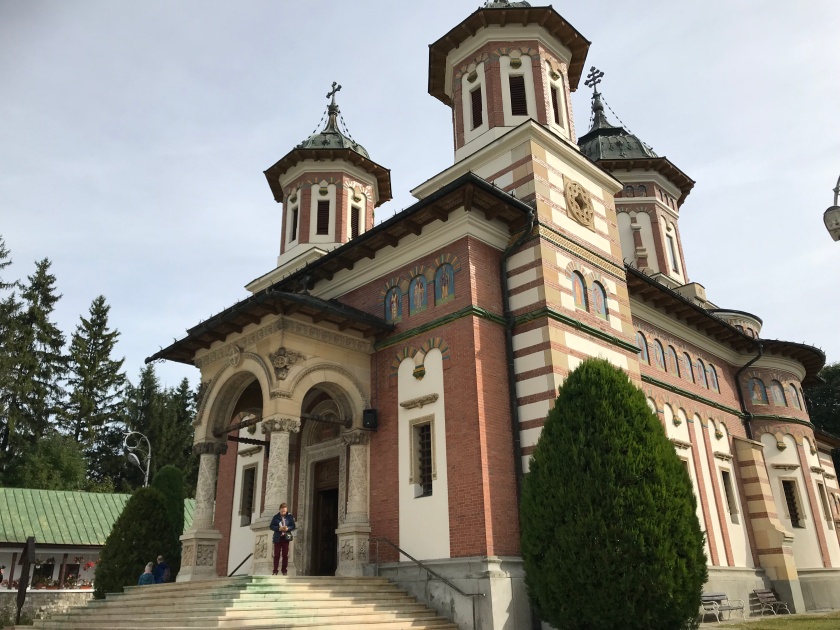
1050: Short walk from the Monastery to Peleș Castle. The route is through a nice woodlands, along the Prahova rive and is lined with many souvenir shops.

1105: Our first view of the Peleș Castle.

The castle was built by King Carol the first and Queen Elisabeth in 1873 as a summer residence. The castle was considered to be one of the most modern in Europe at the time, with central heating, electricity (from a purpose built hydro-power plant), central vacuum cleaning system, electrical elevator and ducted air venting system. The castle was seized by the communist regime following the abdication of the last king of Romania, Michal I (King Carlo’s great grandson). In 2007, the castle was given back to the Romanian royal family. Today, the castle is leased from the royal family by the Romanian government and opened to the public.
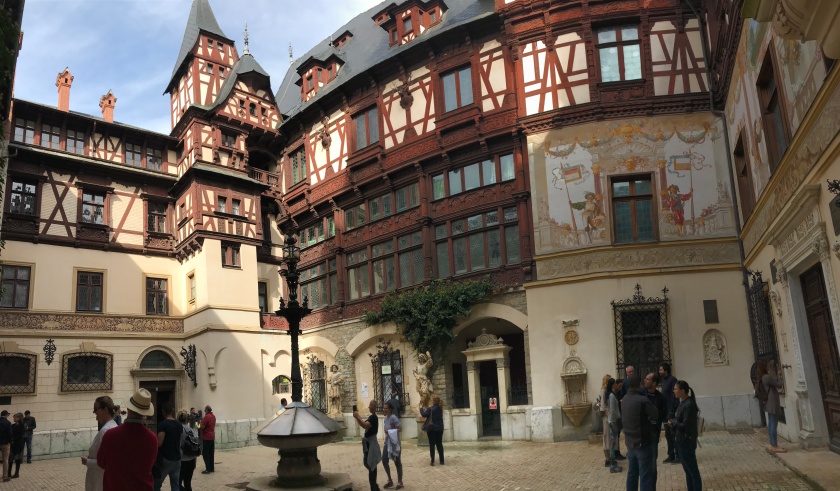
1145: Guided tour of the Peleș Castle.
The inside of a castle is very ornate, and almost all the rooms are dark wood panelled. The visit included the entrance hall, the armoury, the 10,000 book library, the moroccan room (decorated after the Alhambra palace of Spain) and the Turkish smoking room etc. Unfortunately I didn’t buy the photo pass at the start of the tour, so there are no photos of the interior to show you.
Tips for Visiting Peleș Castle:
- Take the extended tour. The basic tour (which we had) cost 30 lei and only covers the ground floor. But for 60 lei, you can have the extended tour which includes the second and third levels of the castle.
- Pay the photography fee at the start (It costs 35 lei). The interior is so ornate it will be worth it.
- Upon entrance, you are provided with overshoes, which you need to wear.
- The castle is very busy, so best visited on a weekday if you want to avoid the crowds.
1245: Peleșior Castle Tour
Peleșior Castle is a stones throw from the Peleș castle. It was built in 1899 by the order of King Carol I, who commissioned it as a residence for his nephew and heir, crown prince Ferdinand and his wife Queen Marie. Unlike the grand Peleș Castle, Pelesior Castle was built as a home for crown prince and princess and their children. As a result, Peleșior castle is smaller, but much more homely. Inside, it is more country house than castle. The castle is built over 2 levels, and is complete with nursery, playroom, rooms for tutor and governess as well as rooms for visiting relatives (such as crown princess Marie’s sister.)
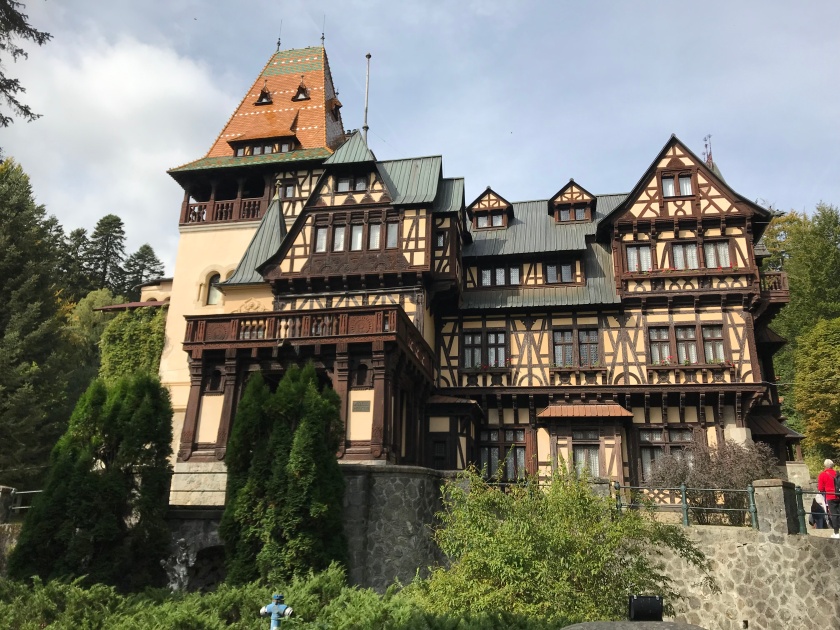
We were told that Princess Marie, later Queen Marie of Romania was very popular in her time. She was born in the UK, to Prince Alfred, second son of Queen Victoria. (The castle guide’s description of Princess Marie of Edinburgh who came from England caused a lot of confusion, until we worked out that she was Princess Marie of Edinburgh because her parents were the Duke and Duchess of Edinburgh, rather than her living in Edinburgh, Scotland). Prince George of Wales (Then third in line to the throne) asked for Marie’s hand in marriage, but she refused, under the guidance of a her mother, Grand Duchess Maris Alexandrovna of Russia who did not like the British Royal Family. Instead, Marie was married to Crown Prince Ferdinand of Romania.
Upon becoming Crown Princess of Romania, Princess Marie adopted all Romanian customs and clothing as well as the learning the language, and was much loved by Romanians. (Incidentally, days after her wedding, Princess Marie’s former suitor, Prince George became heir to the throne upon the untimely death of his older brother Prince Albert. So, had she accepted her first proposal, Marie may have been Queen of the UK).
Tips for Visiting Peleșior Castle
- If possible, visit the castle with a local guide. Inside the castle the descriptions of exhibits are only in Romanian, so it will not be possible to find out what you are looking at unless you understand the Romanian language.
- Visit both Peleș and Peleșior castles. Most tourists only visit the more famous Peleș Castle. Whilst Peleș castle gives you an insight into resplendent world of the sovereign and state affairs, Peleșior castles gives you a “behind closed doors” view of how the royal family lived.
1330-1415: Lunch at the castle cafe.
1415-1430: Time to walk off the lunch and enjoy some Transylvanian scenery. Our next stop is the starting point for the “Royal Path”, a short distance from Peleș castle. It is called the Royal Path as it was a walk regularly taken by the Royal Family when they stayed at Peleș.
1430-1615: The walk is uphill, but not very difficult. It takes us through the forest. The path is paved 90% of the way, but is a bit washed out at the end. Although a bit difficult at the end, the walk is well worth it, as it takes us to the magnificent Franz-Josef Cliffs.
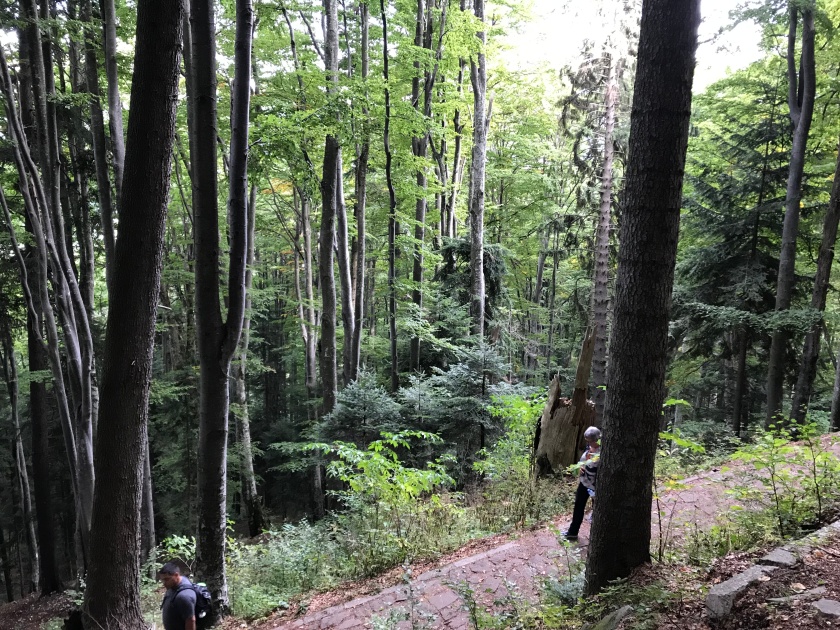
From here, there are magnificent views of Prahova Valley. You can also see Sinaia monastery and Peleș Castle. It is called Franz-Josef cliff as because when the Emperor Franz-Josef came to visit, the king took him up to this view point to show him the boundary of the Austro-Hungarian empire.

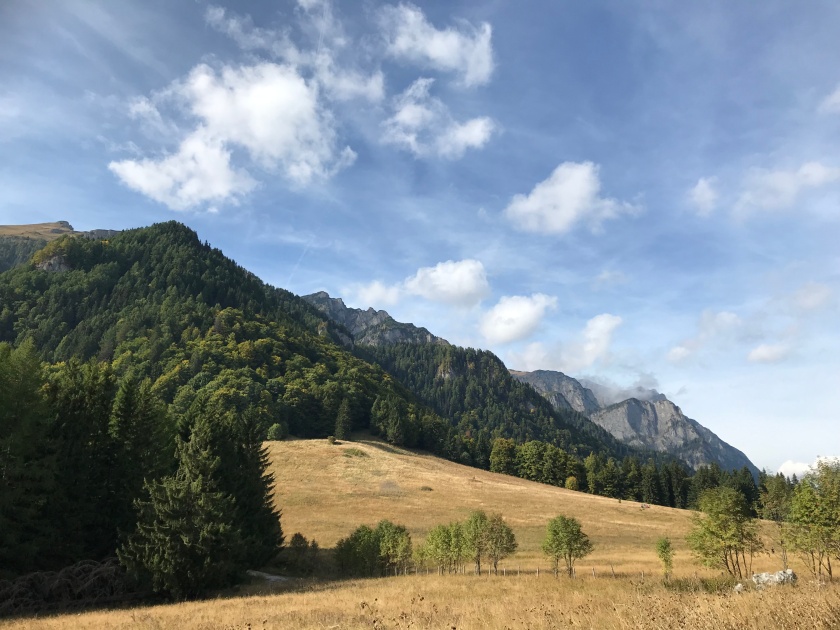
1615-1730: Travel to bear observatory near Predeal.
1730-1745: The bear observatory is set deep into the forest. Once we turn off the main road, our minibus drives deeper and deeper into the forest. After about 15 minute drive, we enter the restricted area and are met by the local ranger. The observatory is another 15 minutes walk into the dense forest. We were advice to walk in silence and make as little noise as possible in order to not scare away the bears. The very last bit of the walk involved leaving the paved path altogether and arriving at the observatory through a small footpath.
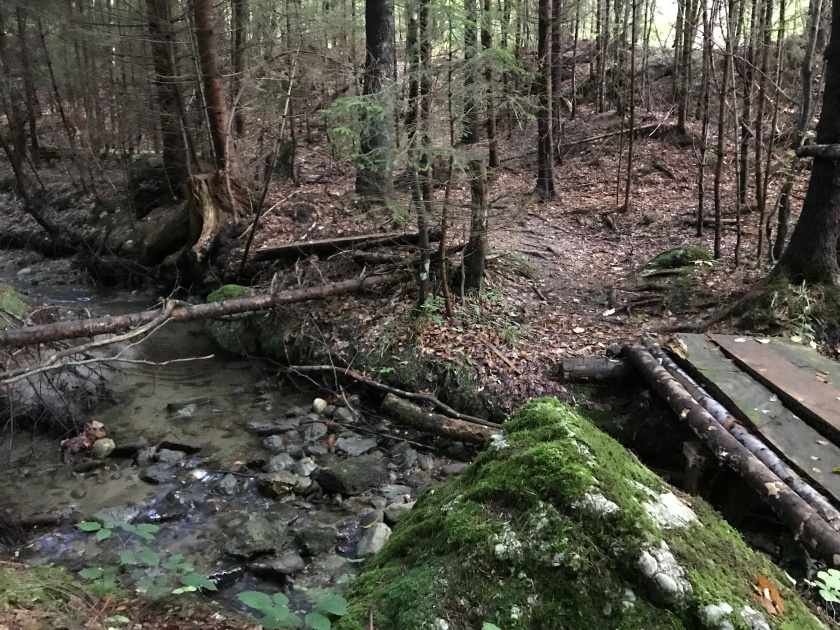
1745: Arrive at Observatory. The observatory is built on stilts, with large windows, and tiered seating. Pine trees are planted around the lodge to blend it into the forest. The inside of the lodge is scattered with pine branches to mask the scent of humans.
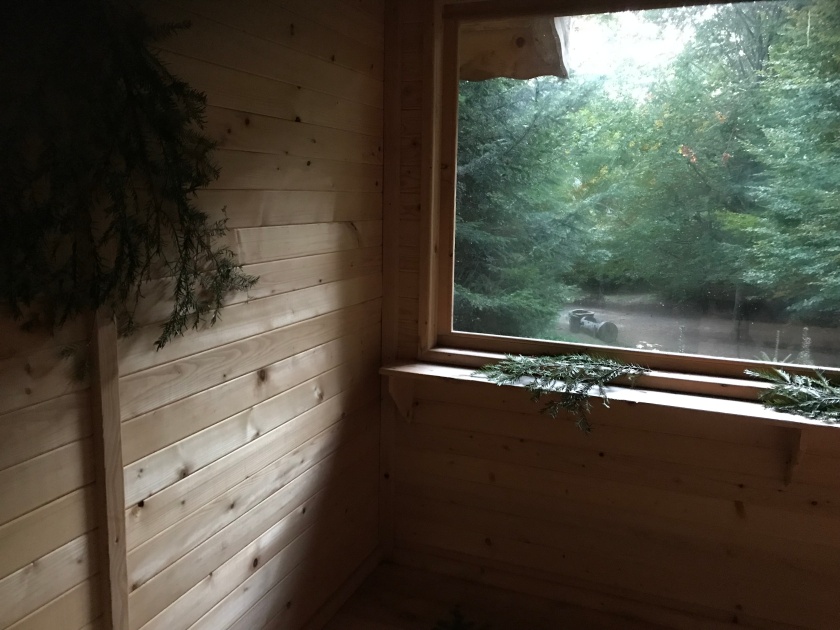
Whilst we settled, the ranger gave us some information about the European Brown Bears.
The European Brown Bear is usually about 400 kg, so smaller than their American cousins, the Grizzlies. Females gives birth in February and keeps cubs for 2 years. Two to four years is the most vulnerable time for a bear cub, as it needs to protect itself from other larger, male bears. Bears would avoid humans whenever possible, and would only attack if startled, or in the case of a female bear, to protect its young. Although no one has been killed by a bear in recent years, there have been some near fatal attacks.
Also, it is a popular belief bears sleep all the way through winter. This is not the case. Bears are less active in winter, but still do go around searching for food. Also, if you ever come across a bear, you shouldn’t run. This only makes you look like prey, and they are more likely to chase you. Playing dead doesn’t work either. Best solution is to speak calmly, but assertively, and make artificial noises like clapping. The aim is to make the bear realise that you are not part of the jungle (and therefore not a threat, and not food!)
The European Brown Bear population in the Carpathian mountains is doing well. But with the reduction of their habitat, and increase in bear numbers, they come in to villages and cities in search of food (so called garbage bears). As run-ins with bears increase, the local population is starting to turn against bears. The fact that the compensation process for damage caused by bears is cumbersome, is not helping matters; people often have to wait for 2 years to get compensation. And this is no good if the bears have taken your livelihood of a horse or sheep or chicken.
Ecologist put Romanian brown bear population at 6,000, whereas the hunting lobby would put it as 10,000. There is currently a push by the hunting lobby to legalise bear hunting. One solution being considered is to use the money from hunting licenses to be fed back into developing the reserve for bears and increase the herbivore population so that bears have enough food in their natural habitat. But there are no easily solutions to such a complex issue. It seems that the European brown bears are a victim of their own success.
The area is also home to a dozen or so Wolves and Lynx. But they only eat meat and don’t go into humans areas and less adaptable, so don’t breed as much. The area was also home to a wild-boar pack, but most of them were killed by the bears.
1830: We sat quietly for about 45 minutes, and with no warning at all a bear walked into the clearing in-front of the hut. It spent a significant amount of time looking around before starting to eat. After a few minutes of eating it was rattled by something in the forest (that we were not able to see) and ran off in the opposite direction.

1905: Soon the reason for the first bear running away became clear – a second bear appeared in the clearing and started eating. But alas, it didn’t stay for long, as it was startled by the red light of the camera from one of our tour group.
1920: As it was almost sunset, our Tour Leader decided that it was time to leave the hut. It would not be wise to walk back through the jungle in the dark.
1935: Back on the mini-bus and head to Bran.
2015: Dinner at hotel Turnul, walking distance from our guest house.
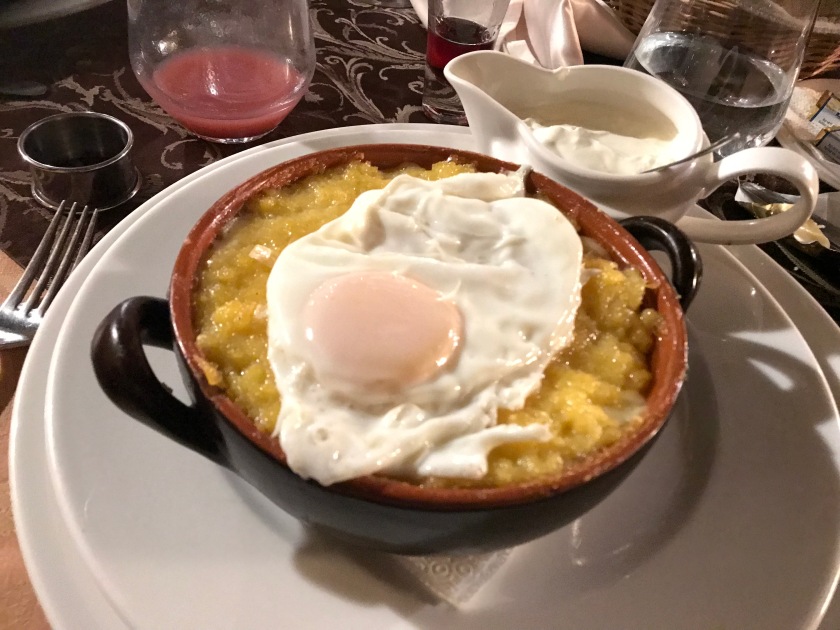
What are your thoughts about my Transylvania weekend trip? Have you been to Romania? Would you like to visit? Leave a comment below and let me know.
Hi Upeksha,
I really enjoyed reading your description of the tour in Romania. I was particularly impressed by the amount of details you put into the description, with exact timing of everything, prices, etc. Wow!
Is a bit sad that Explore did not include the full tour of Peleș Castle, since it would only cost an extra 7 GBP. Was it a very tight timing, so there would be no time to do the full tour anyways?
Just a side note: the other castle, a bit higher up from Peleș is called Pelișor, not Peleșior. In Romanian, Pelișor means little Peleș. There is a complex of three castles in fact, the third being Foișor, which is not a private residence and not open to public.
A note about the Eurasian Brown Bears, I study them a lot, since we organize bear viewing tours:
Males average 250 – 300 kg and can reach up to 400 kg, the heaviest found being 481 Kg (if I remember well there was a 480 kg bear captured in Romania). But they usually weight about 300 kg.
Females typically range between 150 and 250 kg
Yes, is true the babies are at danger of being killed by bigger bears, including their own dads! That’s why the mama-bear is one of the most aggressive animal, especially with male bears. As for the number, there is indeed a big range, from 6000 to 8000 individuals in Romania, maybe even more (I’ve never heard 10000 as a number). However, ecologists justifiably argue that the way the bears are counted, by counting the traces, is not correct. Bears can travel a long distance while looking for food and one can count traces near Brasov or 50 km away as two different bears, while in fact it was only one. The best counting, but far more difficult and expensive is by DNA traces. The advantage of this is not only that the counting is correct, but it provides a lot more information about brown bears population.
Once again, congrats for the blog, it was delightful reading it!
LikeLiked by 1 person
Hi, Thank you for visiting and the lovely comment. So interesting to learn more about bears from your comment.
LikeLike
I’m glad the data about the brown bears were helpful 🙂 You motivated me to create an infographic about the Eurasian Brown Bears and therefore you are the first person to show it to. You can download it and use it for free by going to http://bearwatching.ro/about-brown-bears/ and clicking the infographic thumbnail. I’d be curious to know what you think about it 🙂
LikeLiked by 1 person
Both castles look amazing. I want to go there!! Thanks for sharing. I always love a bit of royal history.
LikeLiked by 1 person
Yes, They are both really beautiful. You should definitely consider going!
LikeLiked by 1 person